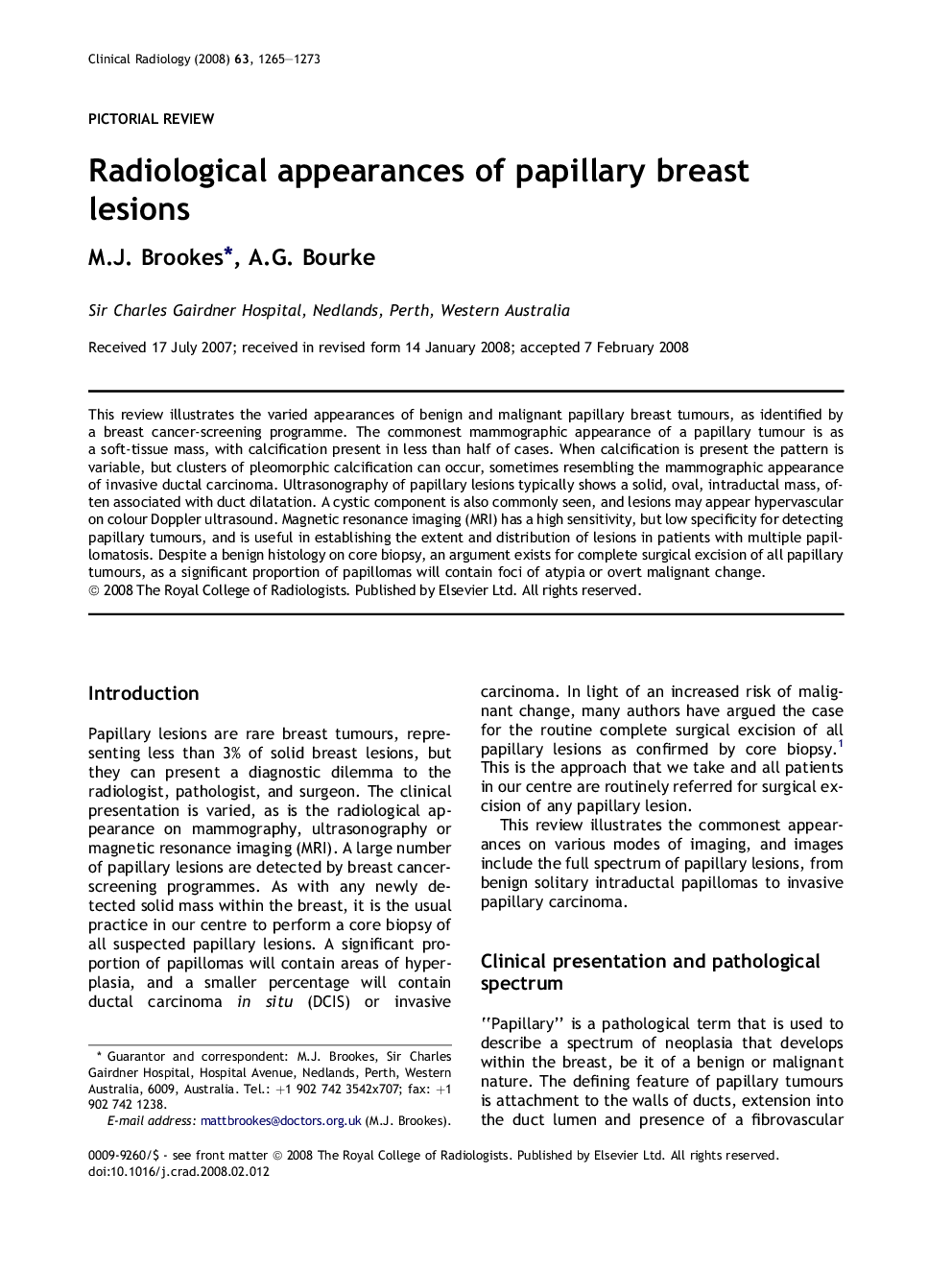| Article ID | Journal | Published Year | Pages | File Type |
|---|---|---|---|---|
| 3983129 | Clinical Radiology | 2008 | 9 Pages |
This review illustrates the varied appearances of benign and malignant papillary breast tumours, as identified by a breast cancer-screening programme. The commonest mammographic appearance of a papillary tumour is as a soft-tissue mass, with calcification present in less than half of cases. When calcification is present the pattern is variable, but clusters of pleomorphic calcification can occur, sometimes resembling the mammographic appearance of invasive ductal carcinoma. Ultrasonography of papillary lesions typically shows a solid, oval, intraductal mass, often associated with duct dilatation. A cystic component is also commonly seen, and lesions may appear hypervascular on colour Doppler ultrasound. Magnetic resonance imaging (MRI) has a high sensitivity, but low specificity for detecting papillary tumours, and is useful in establishing the extent and distribution of lesions in patients with multiple papillomatosis. Despite a benign histology on core biopsy, an argument exists for complete surgical excision of all papillary tumours, as a significant proportion of papillomas will contain foci of atypia or overt malignant change.
